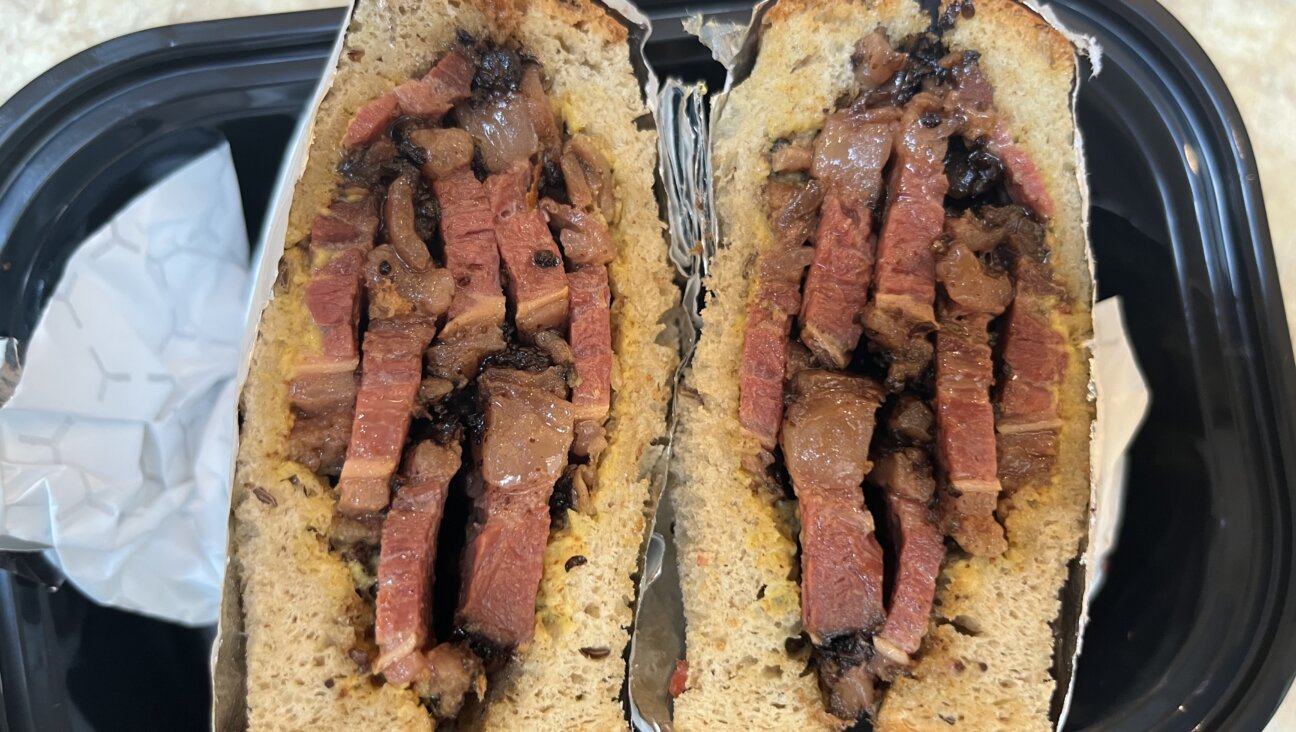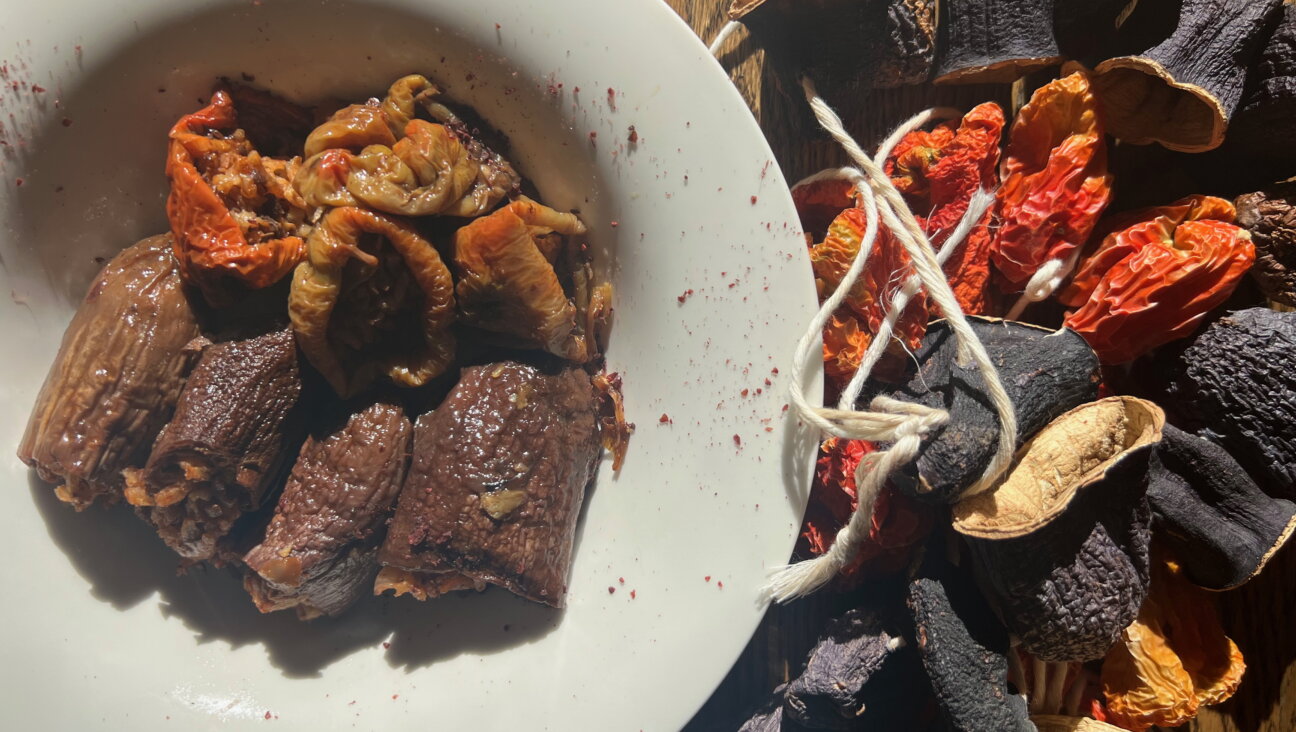Food Noir: Adam Richman Plays Culinary Detective, Part 2

Image by Flickr: SpecialKRB
In this two-part series Eitan Kensky takes a sharp look at food travel shows and the evolution of Adam Richman’s popular show “Man vs. Food.” Read Part 1 here.
One of the most striking elements of “Man vs. Food” was the way it flattened all ethnicities into generic American challenges. The idea of de-emphasizing difference made it rare, if not unique among food shows. Both of Travel Channel host Andrew Zimmern’s shows were built around the idea of eating local and indigenous cuisines that most American’s find disgusting, such as unborn chicken eggs, squirrel and calf (testicles) — especially when the exotic locations Zimmern traveled to were in America, like the Gulf Coast, or the immigrant neighborhoods of New York and Los Angeles. “Man vs. Food,” however, didn’t exoticize ethnic foods or treat them as an other to be discovered; rather ethnic restaurants were just another way to experience over-sized, over-seasoned, or over-spiced American portions.
This approach was especially prominent during the first season when Richman visited Katz’s Deli in New York. The show went out of its way to not make reference to Katz’s Jewish origins. None of the patrons interviewed appeared to be Jewish and Richman treated Katz’s only as a general New York institution that serves very meaty sandwiches. There were, it’s true, a few codes for Jewishness in the presentation. Richman’s mother came to share the food with him, and he referred to her as the person who first introduced him to Deli, but he left out why she introduced him to it in the first place. His mother worried that his upcoming challenge would be “unhealthy,” making shtick out of the stereotype of the over-protective Jewish mother, but it backfires. Given the toxic spiciness of the food Richman is going to ingest later that night, the Brick Lane Curry House’s spicy p’haal, allegedly the world’s hottest curry, she isn’t so much the over-protective Jewish mother as the voice of reason. Nonetheless, it was striking that a 21st century food show didn’t mention that Deli is a Jewish food par excellence, and Richman’s mother presumably took him to delis as part of his heritage.
(Video below)
But a funny thing happened recently in the transformation of the show into “Man vs. Food Nation”: Richman started celebrating ethnic fare for its unique flavors. In the Milwaukee episode, which aired earlier this year, Richman explicitly refers to Benji’s Deli as serving Jewish food (given that the sandwich he ate was the “Hear-O-Israel,” an imposing combination of deli meats including corned beef, pastrami and salami — this was arguably unavoidable). Klezmer music plays in the background, a women refers to herself as a “convert” to Deli, the name of the sandwich is written in mock Hebrew script, and Richman wear a T-Shirt that read “Black Shabbat” instead of “Black Sabbath.” He even uses a mock Yiddish voice when he talks about what makes Benji’s so tasty.
Of course, the music switches to the bad funk of 70’s pornography the moment Richman takes a bite of his “Hear-O-Israel,” but this sudden return to the typical sounds of food shows exemplifies a large part of what makes his show compelling. Richman plays off and parodies the history of food and travel shows and the way television generally creates associations. Richman uses long-standing audio-visual cues (or codes) to tell us that we are in a Jewish space, consuming Jewish foods, then immediately switches to a different set of cues and codes, subtly mocking the way food shows often rely on erotic impulses.
While the scene at Benji’s Deli could be read as Richman’s attempt to re-write his earlier eating at Katz’s, the rest of “Man vs. Food Nation,” suggests that this is really the result of Richman’s turn to a format that better embraces local color and flavor. The show is now more interested in the factors that make a city unique and less homogenized than in seeing all of America as the same culinary region. Ethnic heritage is a part of regional identity, and something that adds to our enjoyment of food. All the better if it improves the televisual experience. It’s as if in celebrating you the viewer (and asking you to eat), Richman now wants to find out who you are.
The Forward is free to read, but it isn’t free to produce

I hope you appreciated this article. Before you go, I’d like to ask you to please support the Forward.
Now more than ever, American Jews need independent news they can trust, with reporting driven by truth, not ideology. We serve you, not any ideological agenda.
At a time when other newsrooms are closing or cutting back, the Forward has removed its paywall and invested additional resources to report on the ground from Israel and around the U.S. on the impact of the war, rising antisemitism and polarized discourse.
This is a great time to support independent Jewish journalism you rely on. Make a gift today!
— Rachel Fishman Feddersen, Publisher and CEO
Support our mission to tell the Jewish story fully and fairly.
Most Popular
- 1

Culture Cardinals are Catholic, not Jewish — so why do they all wear yarmulkes?
- 2

News School Israel trip turns ‘terrifying’ for LA students attacked by Israeli teens
- 3

Fast Forward Ye debuts ‘Heil Hitler’ music video that includes a sample of a Hitler speech
- 4

Fast Forward Student suspended for ‘F— the Jews’ video defends himself on antisemitic podcast
In Case You Missed It
-

Yiddish קאָנצערט לכּבֿוד דעם ייִדישן שרײַבער און רעדאַקטאָר באָריס סאַנדלערConcert honoring Yiddish writer and editor Boris Sandler
דער בעל־שׂימחה האָט יאָרן לאַנג געדינט ווי דער רעדאַקטאָר פֿונעם ייִדישן פֿאָרווערטס.
-

Fast Forward Trump’s new pick for surgeon general blames the Nazis for pesticides on our food
-

Fast Forward Jewish feud over Trump escalates with open letter in The New York Times
-

Fast Forward First American pope, Leo XIV, studied under a leader in Jewish-Catholic relations
-
Shop the Forward Store
100% of profits support our journalism
Republish This Story
Please read before republishing
We’re happy to make this story available to republish for free, unless it originated with JTA, Haaretz or another publication (as indicated on the article) and as long as you follow our guidelines.
You must comply with the following:
- Credit the Forward
- Retain our pixel
- Preserve our canonical link in Google search
- Add a noindex tag in Google search
See our full guidelines for more information, and this guide for detail about canonical URLs.
To republish, copy the HTML by clicking on the yellow button to the right; it includes our tracking pixel, all paragraph styles and hyperlinks, the author byline and credit to the Forward. It does not include images; to avoid copyright violations, you must add them manually, following our guidelines. Please email us at [email protected], subject line “republish,” with any questions or to let us know what stories you’re picking up.















